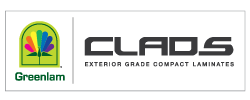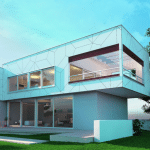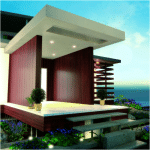Antimicrobial Wall Cladding is not a new thing although the wall surfacing materials recently acquired new superpowers in the form of proven effectiveness against SARS-CoV-2 and COVID-19. Installing anti-COVID19 wall cladding in interior spaces makes a lot more sense in light of the global outbreak of the virus and as a general way to stay protected from similar pathogens. Antimicrobial wall cladding presents an effective way to protect work and living spaces from bacteria and viruses. There are, however, some myths associated with antimicrobial interior wall cladding. In this blog, we bust 4 common myths related to antimicrobial wall cladding.
Myth #1: Antimicrobial Wall Cladding Replaces the Need for Regular Cleaning
Fact: Antimicrobial wall cladding is designed to complement, not replace, routine cleaning practices. While conventional cleaning removes visible dirt and some microbes, its effectiveness depends on frequency, technique, and human effort. Antimicrobial cladding, on the other hand, offers continuous protection by actively inhibiting the growth of bacteria and viruses on treated surfaces. For optimal hygiene in high-traffic or sensitive environments, it is recommended to combine traditional cleaning protocols with anti-COVID-19 wall cladding and basic hygiene practices.
Read Also: What Makes Greenlam Interior Wall Cladding a Perfect Surfacing Solution
Myth #2: Antimicrobial Wall Cladding Takes Hours to Work
Fact: Interior surfaces protected by antimicrobial cladding work all the time to fight microbes. Laboratory tests have proven that it takes only 15 minutes to kill 80% of microbes from the time of contamination. In two hours’ time, 99.9% of microbes on antimicrobial cladding surfaces are killed.
Myth #3: Antimicrobial Wall Cladding Needs Special Conditions to Work
Fact: There is a common misconception that antimicrobial cladding requires a certain ambience with high temperature and humidity to work efficiently. Laboratory tests, however, suggest that antimicrobial technology requires a minimal amount of moisture to work and this is readily available in the ambient air.
Read Also: 3 Commercial Spaces To Install HPL Interior Wall Cladding
Myth #4: Antimicrobial Wall Cladding Is Harmful to Human Health and the Environment
Fact: Antimicrobial substances such as polyhexamethylene biguanide present in wall cladding cannot actively leave the material. Additionally, a human or an animal will have to ingest a huge amount of polyhexamethylene biguanide over a prolonged duration to get ill. The antimicrobial properties extend the life of the wall cladding so that it does not need replacement. Antimicrobial cladding has a positive effect on the environment as it reduces waste material.
Wrap Up
Interior cladding from Greenlam offers antimicrobial properties designed to keep occupants safe from the disease-causing pathogens. Our wall cladding designs are available in a variety of colors and textures that present a cost effective solution to give your spaces an exotic look. To learn more about available anti-COVID19 interior wall cladding designs, call 18008330004 or email info@greenlamclads.com and we’ll take it from there.









